Doctor Who: Ranking the Doctor’s Regenerations
From Time and the Rani to The Parting of the Ways, here are the Doctor's regenerations so far, ranked in order of greatness.
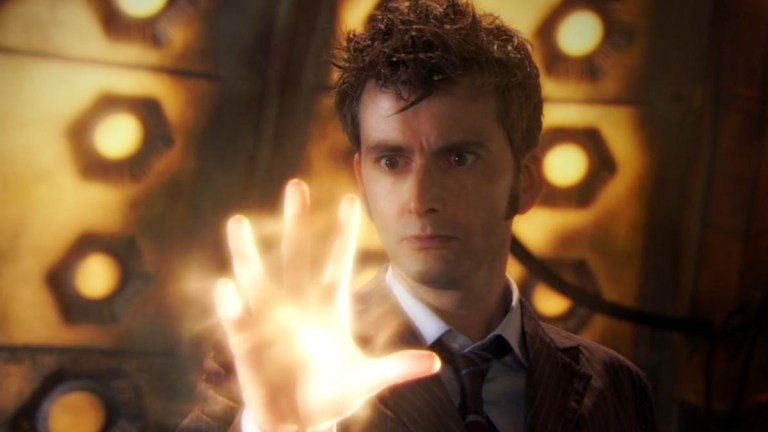
Regeneration stories are a tricky one in that they aren’t entirely consistent. The first time the process was even called regeneration was eleven years into the show’s first run. That story, ‘Planet of the Spiders’, felt like a summing up of the Pertwee era, a celebration of what had made it work and an indication that it was time to move on. This feeling crops up several times across the show’s history. Sometimes there’s a suggestion of the show addressing its own flaws, other times there’s just a bunch of strange decisions being made in the midst of chaotic productions. The only consistent is one actor leaves, another arrives, and change is afoot.
As we anticipate the Doctor’s next change, due this autumn in 2022’s third special, here are the past regeneration stories ranked from least to most successful.
12. Time and the Rani (1987)
Colin Baker to Sylvester McCoy
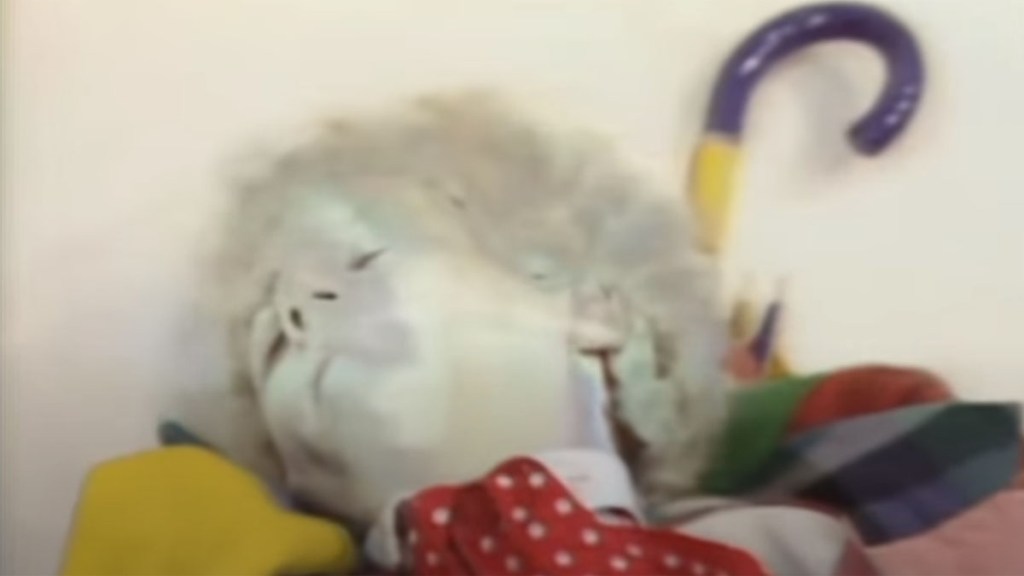
‘Time and the Rani’ is all over the place. I wouldn’t say it’s the worst story ever, because while it’s a lacklustre romp remembered mainly for its camp, it isn’t mean-spirited. Its CBBC tone was imposed by the BBC after the excesses of Season 22, but it manages a genuinely good cliffhanger to its first episode, and Sylvester McCoy’s performance – while also all over the place – does contain a few moments that showed where he would later take the character.
However, as a regeneration story it has to be bottom of the list because it’s a complete failure. Even allowing for the version written where Colin Baker appeared in all four episodes and regenerated at the end, he would have sacrificed himself in a similar way to Beyus: waiting behind (unnecessarily as it happens) to make sure some bombs went off and thwart the Rani’s plans.
Coming at the end of a silly story, dying for no obvious reason without any sense of payoff or character development, this would also have been an undignified way to go. However, as the BBC asked Colin Baker to return for only the regeneration scene it didn’t go this way. Baker refused, as you would, and the regeneration scene was performed by Sylvester McCoy in an ill-fitting wig. All we have onscreen to indicate the reason for the regeneration is the suggestion that the Doctor fell off his exercise bike and hit his head on the TARDIS console when the ship was attached by the Rani. Not for the last time in Doctor Who history, a regeneration sequence was filmed when it would have been better to just start with the new incarnation in place.
I’m aware that the Sixth Doctor’s regeneration is also explained in the novel ‘Spiral Scratch’ – a book that contains the line “Mel returned the smile, but hoped her eyes were saying “Die Bitch Die!”’ – and Big Finish’s ‘The Final Adventure’ box-set, but this article is only covering TV stories. This is because I have only finite resources in terms of time, money and sanity.
11. The TV Movie (1996)
Sylvester McCoy to Paul McGann
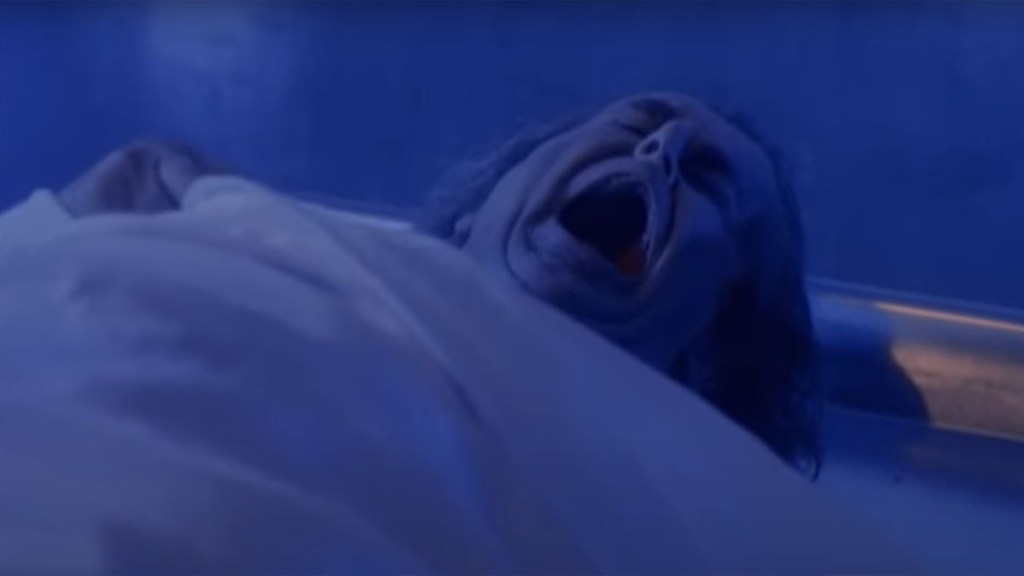
This 1996 movie was broadcast as a pilot for a potential American series, while trying to follow on from the original run that ended in 1989. Explicitly tying it into the same continuity was considered important by producer Philip Segal and so – despite a BBC Executive suggesting that the more recognisable Tom Baker should appear in his place – Sylvester McCoy appeared as the Seventh Doctor so he could be seen to regenerate into Paul McGann’s Eighth. As McCoy himself later pointed out, he absolutely should not have been in this movie. His appearance means that the new Doctor has much less screen time to make an impact, as well as being a terrible start for a new audience: here’s Time Lords, Daleks, the Master, and regeneration. The story doesn’t really start for half an hour. Enjoy!
The manner of the Seventh Doctor’s regeneration is also strange. He walks out of the TARDIS into a gunfight and gets shot before he’s got his bearings (if you have seen the show you wonder why he didn’t use the scanner, if you haven’t seen it you’re thinking ‘Man, that space/time machine could really do with a way of looking outside’). Rushed to hospital, he is killed on the operating table by a surgeon who doesn’t understand Time Lord anatomy and the anaesthetic delays the regeneration (which could have been a bigger deal if anyone had run with it).
It works on some levels, with the Seventh Doctor’s characterisation (especially in the New Adventures) making it bleakly fitting that the schemer, the man who arrived with a plan in action, dies so abruptly and carelessly. Mostly though, I see my Doctor dying scared, confused and alone for stupid, arbitrary reasons in a story he shouldn’t even be in, and I hate it.
10. Planet of the Spiders (1974)
Jon Pertwee to Tom Baker
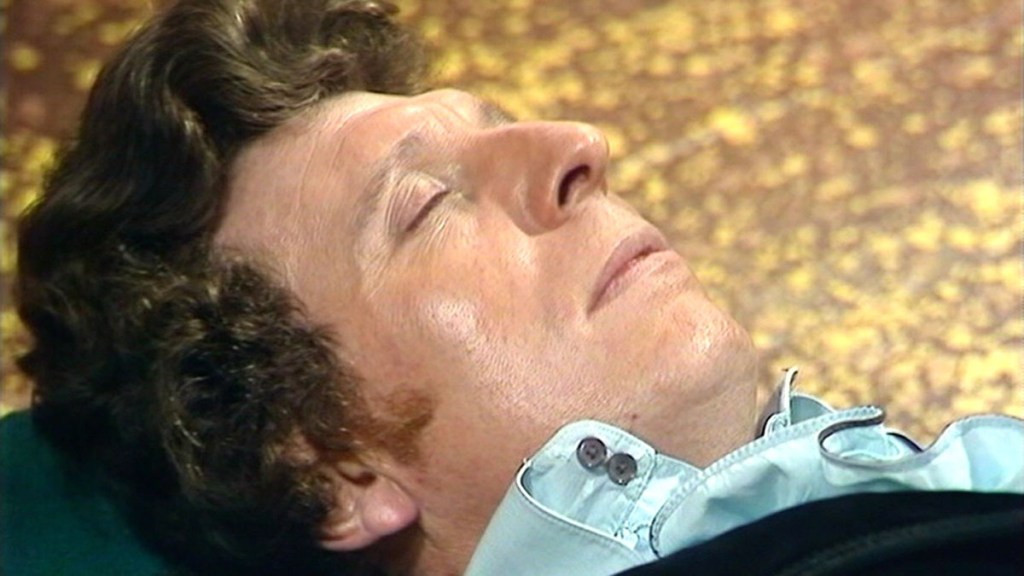
The idea that pre-credits sequences from 2005 onwards were replacing the old episode ones is perhaps unfair. In the case of ‘Planet of the Spiders’, it’s replacing at least three episodes where you could generously describe the story as taking its time. The elongated chase sequence that comprises most of Part Two is colossally indulgent, reminiscent of the chicken fight gag from Family Guy in its sheer length and the frankly hilarious nerve to end by revealing the entire thing achieved nothing. When we finally get to the titular planet near the end of Part Three, we find the cast of Hair indulging in the art of coarse acting. If it weren’t for the sizeable goodwill the cast had accrued over the years this would be excruciating.
It isn’t until the penultimate episode that we approach anything of substance; when all the storylines begin to coalesce, with the Doctor’s greed for knowledge being a cause of destruction, his own and for others. It fits the Third Doctor’s character – haughty superiority, paternalistic – to be confronted by the repercussions of his actions and atone for them. The problem is that this isn’t raised until the final episode, so the finale is rushed. Given that not a lot happened in the first five episodes, this is especially galling.
What lingers from this story, and my childhood memory of it, are the images of Sarah Jane Smith with a spider on her back, the chase sequence, and not a lot else. The actual emotional weight is largely explored in spin-off media (such as Paul Cornell’s ‘Love and War’ and Joanne Harris’ excellent ‘The Loneliness of the Long-Distance Time Traveller’), and a frankly tawdry regeneration scene is saved by Nicholas Courtney’s ever-reliable deadpan reactions.
9. Time of the Doctor (2013)
Matt Smith to Peter Capaldi
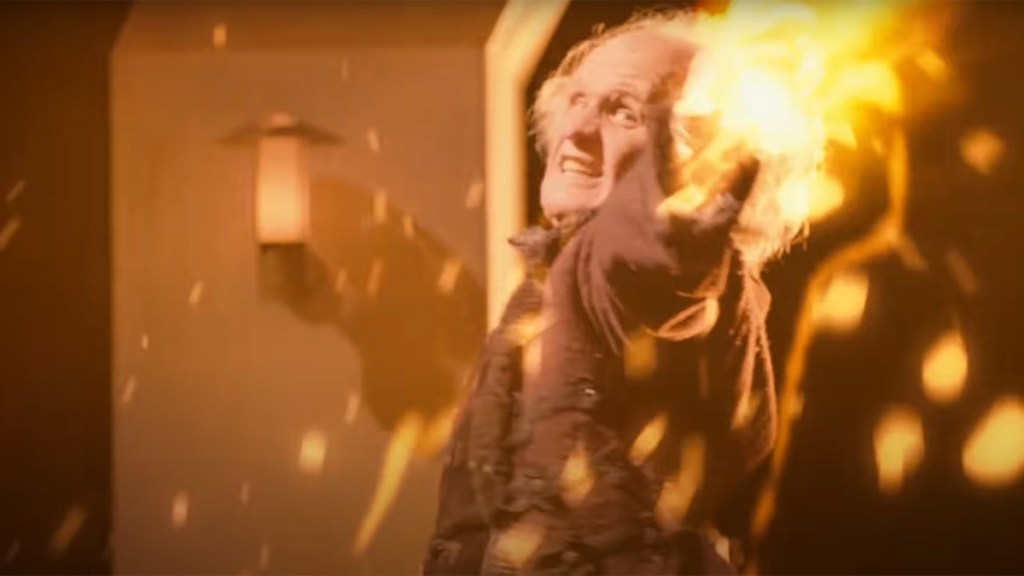
This is a mess. The positives: the scene where Clara and the Doctor sit and talk where Handles fails to see a new dawn, and from the reveal of the ancient Eleventh Doctor onwards there’s a lot of strong stuff and a great final speech from Matt Smith (‘I’ll always remember when the Doctor was me’) with lovely music from Murray Gold. The concept of the Doctor growing old defending one town, and that it’s old age rather than any monster who kills him, is great. Essentially, everything on the planet of Trenzalore is good, pretty much everything else isn’t.
Due to Matt Smith leaving and the 50th anniversary, Steven Moffat found himself having to resolve three years of continuity in one Christmas special (one which my in-laws found a chore, and I don’t expect they were alone). Clara’s awkward family Christmas works as a visual contrast to the Doctor’s adventures, but otherwise is too briefly and broadly sketched to have any impact. Then there’s the nudity gag which just doesn’t land, feeling uncomfortable rather than funny, as does the Doctor’s relationship with Tasha Lem: on broadcast I assumed this was meant to be River Song but Alex Kingston wasn’t available for filming (Moffat later confirmed in this interview with Toby Hadoke the idea was “The Doctor meeting his first girlfriend, and now she’s the Pope’ but the character ‘went a bit too River Song”).
The Daleks become the ultimate threat in the episode but are established in a jokey throwaway scene. There are so many one-line explanations for plot points from the previous three series on top of bad sitcom moments, it just feels rushed and – with bitter irony – in need of more time.
8. The Tenth Planet (1966)
William Hartnell to Patrick Troughton
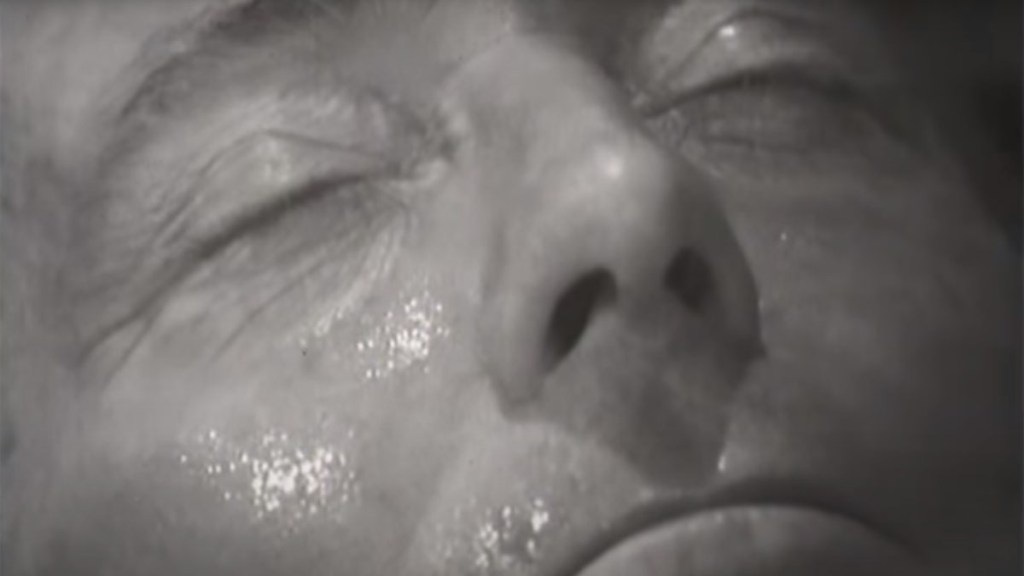
The first regeneration, which at this point wasn’t called or necessarily thought of as a regeneration and certainly wasn’t positioned as an event or finale. Two stories into the fourth season, William Hartnell turned into Patrick Troughton with little to no effort to ease viewers in to the transition.
With Hartnell’s arteriosclerosis worsening, he was struggling with his memory and increasingly difficult to work with. Heartbroken, he agreed to leave the role. Previous producer John Wiles had tried to remove him from the role and cast a new actor as the First Doctor. Innes Lloyd and Gerry David came up with the concept of the Doctor becoming a newer, younger person and this ultimately became regeneration. With Hartnell agreeing to leave after one more story, and with Season 4 opener ‘The Smugglers’ already in the can as part of a Season 3 production block, the first story produced for the next season had a regeneration scene added to the end of Part 4, and so ‘The Tenth Planet’ became the first regeneration story.
So while the story doesn’t deliberately build to the regeneration, Hartnell’s absence in Part 3 due to illness does help with foreshadowing. While the story isn’t completely clear on the reasons for the regeneration, it does strongly imply that the Doctor’s health is connected to the fate of the planet Mondas, which appears to have some sort of vampiric quality and acts as a life source for the Cybermen: once it’s destroyed they fall apart.
Polly says the Doctor fainted once Mondas absorbed too much energy and exploded, and the famous line about ‘this old body of mine is wearing a bit thin’ should be quoted in full. At the start of Part 4 Polly asks him why he’s sick, and he replies: “Oh, I’m not sure, my dear. Comes from an outside influence. Unless this old body of mine is wearing a bit thin.”
A clip of the regeneration scene exists: originally intended to be revealed by Hartnell’s cloak falling across his face, and then having it be removed to reveal Troughton, vision mixer Shirley Coward used a faulty mixing desk to over-expose the image and add to the unsettling behaviour of the TARDIS in the scene. This is the main strength of the first regeneration, that once the Doctor awakes from fainting something is clearly wrong. Hartnell knows it’s the end, but finds an inner strength to return to the TARDIS. Rather than being a comforting place, the levers and lights on the console twitch and flicker as the Doctor collapses. It’s scary, weird, and haunting.
‘The Tenth Planet’ meanwhile, peaks in Part 2. It effectively consists of the same plot twice: an Antarctic base grows paranoid as a planet appears in the sky, and then the Cybermen attack in the next episode. The first time round this is much more effective, but the second time it happens it’s obviously less novel and already reducing the Cybermen to a more generic threat. There are a lot of good ideas here: the Doctor’s warning that if they can hold out without loss, Mondas will soon explode is opposed by General Cutler, who is full of despair and rage at losing his son. Ben’s emotional response to killing a Cyberman acts as a further contrast between humanity and their cyborg counterpart. However, the story abandons any exploration of these tensions in favour of a shoot ‘em up.
7. Logopolis (1981)
Tom Baker to Peter Davison
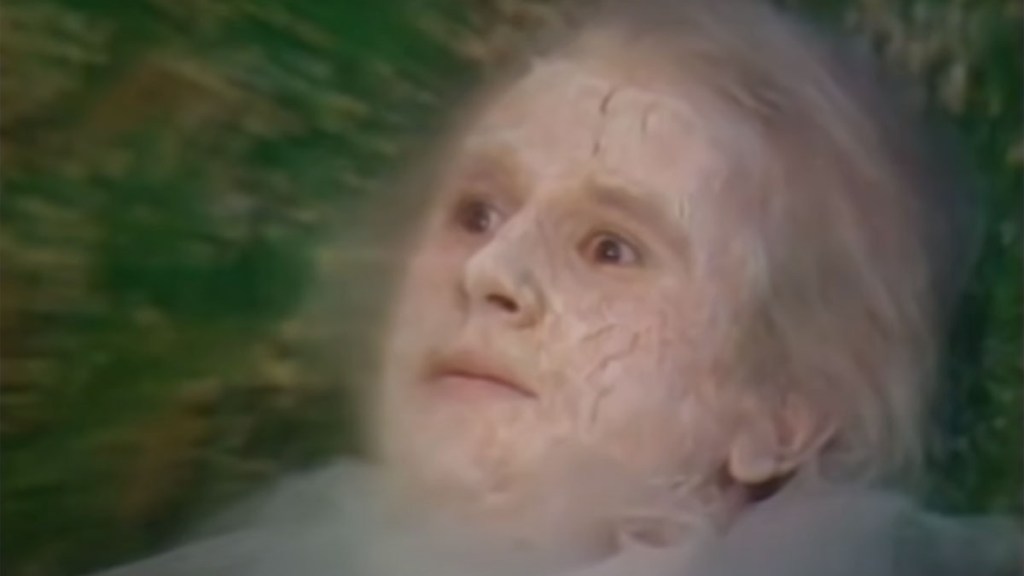
Context is important for me here: I saw this on VHS having watched some Doctor Who stories on telly, and this was my second Fourth Doctor story. I didn’t have the seven years of build up or the sense of a significant childhood figure departing. I often ponder how this story would be thought of if it had been Colin Baker or Paul McGann in the role. I suspect it would make little difference to the story, because this script isn’t written specifically for the Fourth Doctor. The difference the Fourth Doctor makes is the legacy of years.
Which is fortunate, because ‘Logopolis’ needs that weight, because without it there’s little pathos (especially for a story where trillions of people die and the Doctor sacrifices himself to stop the rest of the universe going with them). Partly it’s the structure of the story, where the first half is more into atmosphere than sense.
Having set up the ghostly figure of the Watcher, who turns out to be a premonition of the regeneration, we realise the Doctor knew he was going to die, but there’s no sense of this when it comes to his final sacrifice: pulling a cable out of a radio telescope to stop the Master having power over the universe. If anything, you can hear Barry Letts insisting that there’s a spark when the Doctor pulls the cable out to suggest the Master can’t just plug it back in again.
It’s not without positives – the concept of a city of words that can shape reality is superb – but its strengths are in its concept’s intrinsic qualities, rather than how they’re used. Now, having seen the previous seven years of Tom Baker stories, I feel that this makes ‘Logopolis’ more of a missed opportunity. Here we see him morose and serious, just a flicker of his old self as he says ‘It’s the end…’
For the Fourth Doctor – and only the Fourth – I’d prefer to see him without character development. I’d like to have seen him go out funny, angry and ridiculous, yanking that cable out the telescope while laughing his head off.
6. Twice Upon a Time (2017)
Peter Capaldi to Jodie Whittaker
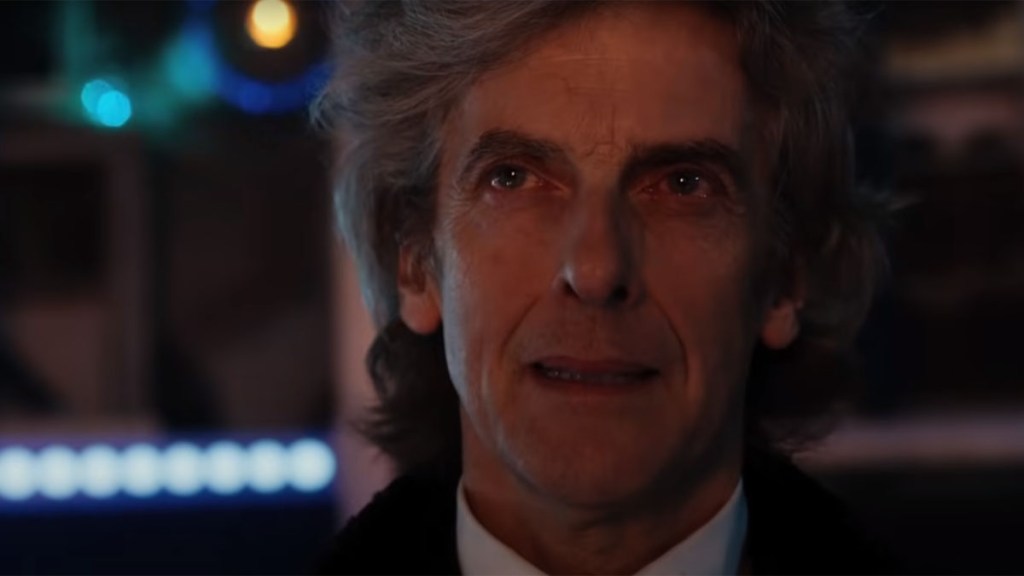
Steven Moffat was reportedly planning on leaving at the end of Series 10, but then discovered that there wasn’t a Christmas Special in place afterwards. Rather than lose such a prestigious slot, Moffat elected to write another episode for Peter Capaldi’s Twelfth Doctor. The implication is that the Series 10 finale, ‘World Enough and Time/The Doctor Falls’ was due to be Capaldi’s regeneration story. If this had been the case, it would have been up near the top of this list. As it is, we have ‘Twice Upon a Time’, which has some fantastic scenes and ideas in it but doesn’t quite work. A slow-paced story examining the Twelfth Doctor’s weight of years (connected with ideas of memory and identity) and the First Doctor’s fear of his first death could have been great.
However the story never fully invests in their situation and why they’re feeling like this. Instead the First Doctor is used as an avatar for all of the Sixties’ sexism, which isn’t entirely fair and it’s not as the show has been free of such attitudes since it returned in 2005. Then the Twelfth Doctor’s final words, a lesser version of his kindness speech from ‘The Doctor Falls’, goes on slightly too long. There’s clearly space in the story where something more solid could go: more scenes like the First Doctor talking to Bill about why evil should win more often, the twist of there being no evil plan here, and ‘I’ve lost the idea of dying’. This could have been a classic.
As it is, we never quite grasp why the Twelth Doctor wants to die, and we certainly don’t get a strong idea of why he changes his mind. After all the good work Moffat has done subverting the Doctor’s heroism and ego, to have a little speech at the end about how epic he is (‘My testimony would shatter all of you’) feels wrong.
This, coupled with the fact that the superb ‘The Doctor Falls’ was almost Peter Capaldi’s regeneration story and Moffat’s last script, makes ‘Twice Upon a Time’ a little disappointing.
5. The End of Time (2009/2010)
David Tennant to Matt Smith
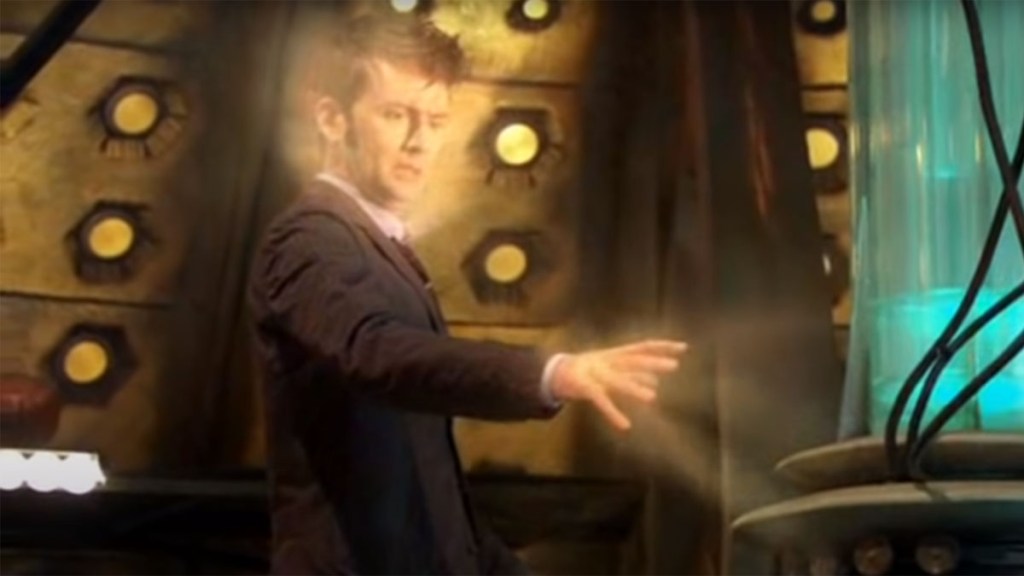
As with ‘Twice Upon a Time’ this was not the original plan for the regeneration story: Russell T. Davies was considering the end of the Tenth Doctor as a mini-series and a low-key regeneration story (the Doctor sacrificing himself to save a family from a radiation leak on a spaceship). Jane Tranter offered an extended two-part story that made Davies’ mind up for him: something bigger was needed.
We definitely got it.
When reviewing, it’s important to consider the author’s intention and the likely audience. Here, it’s fair to say that the intended audience were absolutely on board with ‘The End of Time’, moved by his final words and his farewell tour of companions. This is the biggest Doctor since Tom Baker, a pop culture icon, and in that context it absolutely delivers.
If you’re less convinced of the Tenth Doctor’s heroism and more intrigued by his flaws, this story also works: the Tenth Doctor’s farewell tour consists of him glaring at his friends, he saves Wilf’s life only after complaining about it first, and it’s interesting watching the two sides of the Tenth Doctor pulling in different directions: having railed against guns in ‘The Doctor’s Daughter’ we now see him pick one up as soon as he realises Gallifrey is back. So much character work has gone into making that moment have that much impact.
However, it’s also true that ‘The End of Time’ is a padded indulgence in places. It would benefit from a shorter running time. I can’t say that I find most of the Master material from Part 1 necessary, which is fine (lots of great Doctor Who is unnecessary on multiple levels) but I can’t say it really adds anything either. The second episode is where most of the good stuff lies. Some of what Moffat would build on in the Doctor/Master relationship is here, Bernard Cribbins crying is going to make anyone watching cry along too, the final scene with Rose and Jackie lands better than anything with Rose from Series 4 (indeed, if the character hadn’t recently returned it’d be even better), and the reveal of Wilf being the person who knocks four times is genius.
What doesn’t work so well is the justification for the Tenth Doctor being so wound up (besides, y’know, being the Tenth Doctor): the idea that a regeneration feels like dying, ‘Some new man goes sauntering away, and I’m dead.’ This simply hasn’t been mentioned before or since (and neither has the character credited as ‘The Woman’, intended by Russell T. Davies to be the Doctor’s mother), and so – as with the Master’s drumming in his head – feels like it’s a quirk of this incarnation, unique to this era. Alternatively, it just plays into the notion of Ten as a narcissist.
Watching this back, there’s a lot to admire, but as with ‘Twice Upon a Time’ there’s a sense of an era run its course, now so big that it’s asked to fill a run-time that there isn’t enough left in the tank for.
4. Night of the Doctor (2013)
Paul McGann to John Hurt
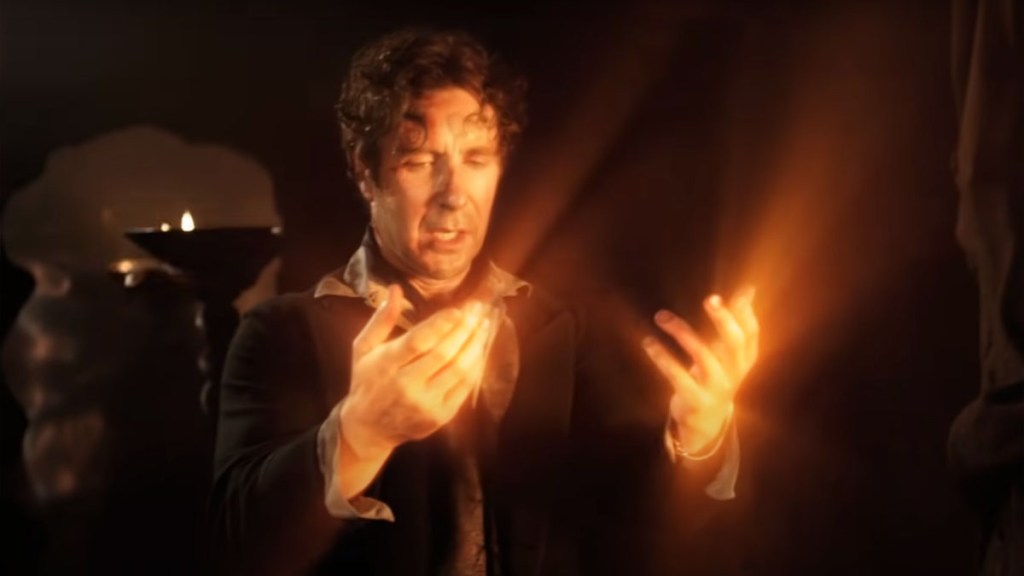
John Hurt had been revealed as a secret incarnation of the Doctor – back in the days when no-one was a secret incarnation of the Doctor – who would feature in the Fiftieth Anniversary special. For this online minisode, the BBC teased that one of David Tennant, Matt Smith or John Hurt would feature. It was therefore a very pleasant surprise when Paul McGann appeared so he could regenerate into John Hurt’s incarnation.
As with Peter Davison’s appearance in ‘Time Crash’ (a Children in Need minisode) McGann isn’t given dialogue tailored to him but something you’d expect to find in a 2013 episode, with the actor allowed to filter it through their take on the character.
As with ‘Logopolis’, a lot of the emotional heft here comes from the fact that it’s this actor who is regenerating, but despite the short running time Steven Moffat manages to evoke an untold story: on a basic level listing companions gives a sense of a life lived, but for the Eighth Doctor – passionate, joyful, vivacious – there’s an extra sense of defeat, not just in death but in ideals, that means the happiness of seeing him again gives way to sadness, an overall feeling of melancholy.
3. The War Games (1969)
Patrick Troughton to Jon Pertwee
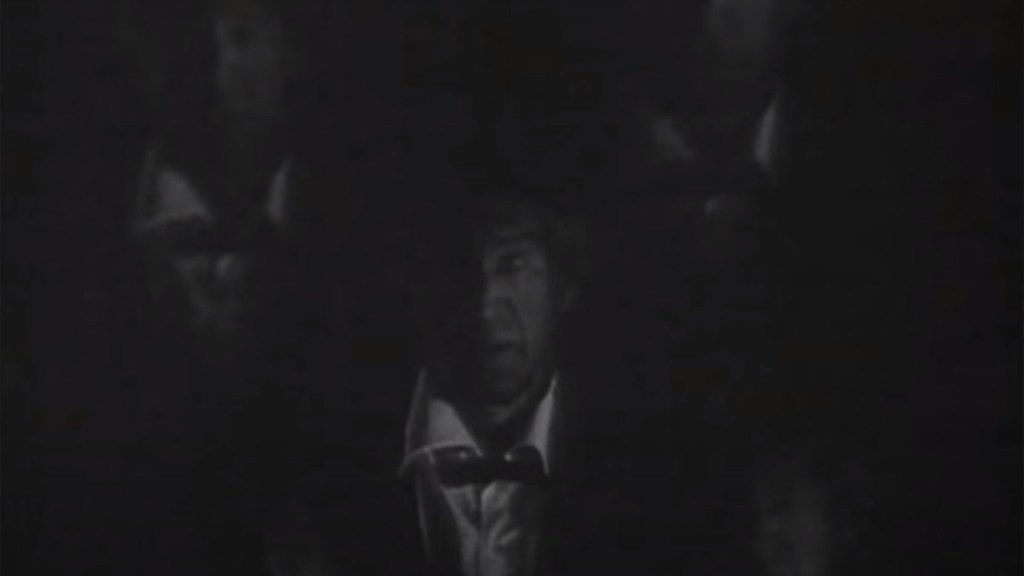
Patrick Troughton left after three years because, working on Doctor Who for around 40 weeks of the year, he was exhausted. Behind the scenes, stories were falling through, so two stories designed to fill a six episode slot didn’t work out, and neither did Story Editor Derrick Sherwin’s final four-parter. This left ten episodes needing to be written, with the requirement to write out the Second Doctor and his companion Jamie, set up the new Earthbound format for the next season, and also – at Sherwin’s suggestion – invent and introduce the Doctor’s people. Writing began in late December 1968, Wendy Padbury decided not to return the following season in January, meaning companion Zoe also had to be written out, and filming started in March 1969 for a broadcast starting in late April.
So it’s a miracle that ‘The War Games’ is as good as it is, really. It does drag at times, there is a lot of capture and escape and scenes of prolonged biffing, but it’s very forgivable. When it’s at its best ‘The War Games’ is superb. With Malcolm Hulke and Terrance Dicks co-writing there’s a political subtext welded to a strong science fiction concept (there’s anger directed at the senior officers who sent men to their deaths, support for the subjugated coming together, coupled with the acknowledgement that there are limits to what Doctor Who can do: the Doctor cannot save the day alone here; he cannot stop the horrors of war, only limit them).
There’s a strong sense of the banality of evil here: the War Chief and Security Chief, two of the aliens who are organising the war games of the title, bicker and snipe at each other pettily. The War Lord is a quiet, still, middle-aged man with an aura of rage. He is very calm about what they’re doing, and so are the Time Lords. When they appear and sentence the War Lord to be erased from existence, to send Zoe and Jamie back to their respective timelines (where the latter will most likely die), they almost murmur their instructions.
It’s up against these huge systems, capable of quietly erasing a life without hint of moral uncertainty, the Second Doctor finds himself defeated. Troughton gives off a huge sense of melancholy here, understated but making the audience certain of his loss. This sense of melancholy is then colossally undercut by Troughton being sent off into the void, gurning as he disappears.
2. The Caves of Androzani (1984)
Peter Davison to Colin Baker
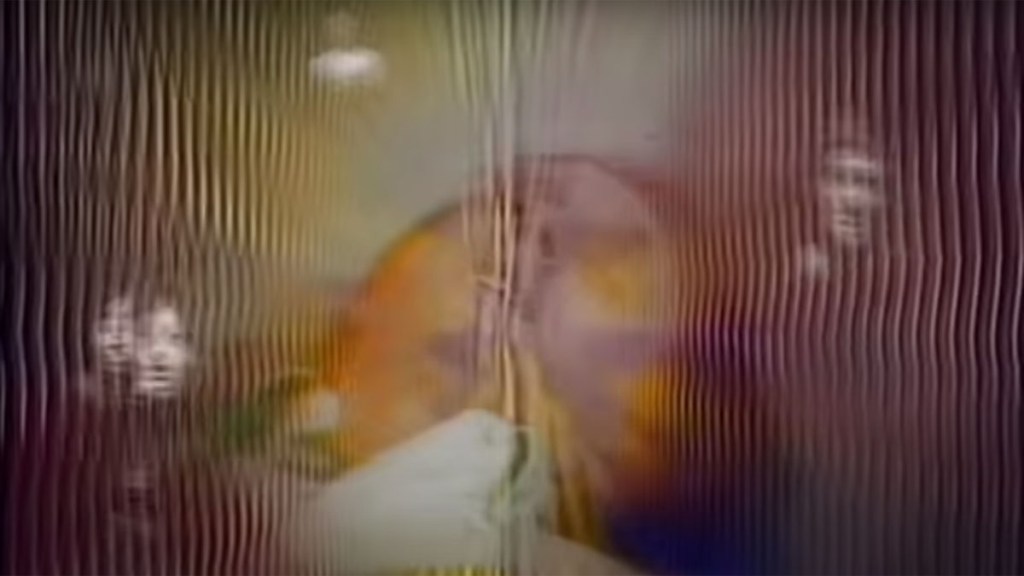
‘The Caves of Androzani’ – barring the fact the apparently terrifying Magma Creature looks like a small dragon in a starched cape – is fantastic. The only reason it isn’t top is because the number one story slightly fudges the reasons for regenerating whereas so much of makes ‘Androzani’ incredible is completely negated by the story that follows it.
In context, the final Fifth Doctor story comes after one of his companions (Adric) dies, another leaves to work in a medical facility she might not come back from, his longest serving companion leaves him in disgust after he attempts to kill Davros, and in his last story the Master apparently burned to death in front of him after he’d killed another companion on that companion’s own instructions. Plus there had been two stories recently where pretty much every non-regular character died.
So when the Doctor and Peri – the Doctor’s brand new companion (who he doesn’t seem especially fond of initially) – arrive on Androzani Minor and find themselves caught up in gun-running, political intrigue and burning hot mud bursts erupting from the planet; well, it’s pretty much par for the course. Difference here though is that the Doctor and Peri are poisoned by the raw form of the drug everyone’s trying to trade in, and spend most of the story slowly dying. There’s an unseen point where the Doctor snaps. Once he’s told he’s dying he asks if there’s an antidote, and responds to the ensuing laughter with a look that we don’t see, but the character of Salateen does. From this point onwards the Doctor is determined to get the antidote and leave, but the political intrigues on Androzani constantly threaten to overtake him.
It’s against this most cynical of backdrops that the Doctor emerges heroic, working against the odds just to save one person. You’ve got the cliffhanger to Part 3, which is up there with the greatest in the show’s history, and there’s the Doctor hallucinating as he dies that culminates in this incarnation’s last words being ‘Adric?’ – paying off the storylines where the Doctor’s idealism seemed powerless in the face of a hostile universe in a story where they finally triumph over the petty and violent squabbles on Androzani (ones the production team emphasise seem operatic or Shakespearian to the people involved, but from the Doctor’s point of view are just ugly and tragic). In a lesser writer’s hands this could have been merely ugly, but Robert Holmes is superb at characterising different male egos in combative modes. Holmes’ main weakness as a writer (the finale where the Doctor just clobbers the bad guy) is transferred alongside his usual cynicism, meaning the Doctor emerges with his ideals not simply intact but cast in a heroic light.
The problem is not in ‘The Caves of Androzani’. ‘The Caves of Androzani’ is stunning. The problem is what comes after: in the next story the newly regenerated Doctor strangles Peri and his unpredictable behaviour means she can’t tell if he’s going to be protective or aggressive towards her. The new Doctor fits in with the still cynical and hostile universe. Everything the Fifth Doctor sacrificed for Peri was for nothing, his victory hollow, because he ended up saving her just to become her new tormentor.
1. The Parting of the Ways (2005)
Christopher Eccleston to David Tennant
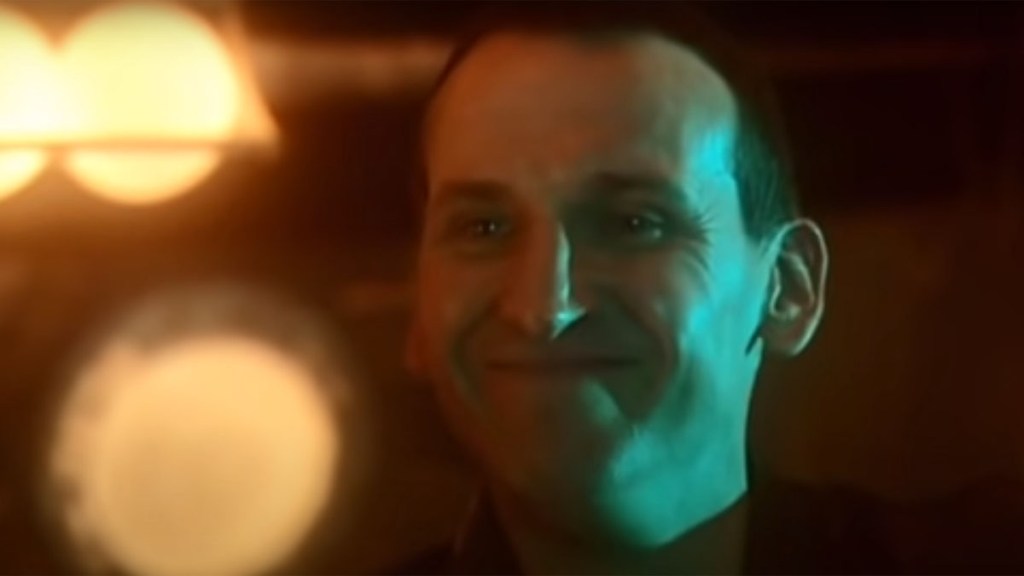
The weak point here is that the exact reasons for the Doctor’s regeneration are not explicit, but there’s enough to extrapolate from. The fact that Rose is determined to return is heroic, but there are also understated moments of heroism from her ex-boyfriend and her mother especially. Jackie Tyler has a hellish time in Series 1 (thinking Rose is missing for a year, having her run off and leave her again as soon as she’s returned) and her ultimate response is to support Rose. There are quiet moments of humanity, and not all good, contrasting with the destruction being wrought.
This is the first regeneration story to feature Daleks, and here they are at their most threatening: Series 1 had to bring them back with credibility and weight, proving their legacy rather than using it. Accordingly they push the Ninth Doctor into the darkest place he can go.
There’s a legend of the Doctor opposed by the reality. Steven Moffat would later have the Twelfth Doctor ascribe the name ‘The Doctor’ as a set of ideals to live up to, rather than the person he often is. ‘Never cruel or cowardly’ is one of the maxims, and so Russell T. Davies goes for the jugular in his first (and at the time, potentially only) series as showrunner: here the Doctor has to be cowardly and/or cruel. The Daleks will either destroy and convert all human life on Earth into a new race of Daleks, or the Doctor will destroy all Dalek and human life in the immediate vicinity of Earth with a delta wave.
To complicate matters further, this comes in the wake of the Time War where the Doctor believed he had destroyed the Daleks and his own race simultaneously. So rather than the ersatz dilemmas of ‘Genesis of the Daleks’ and ‘Into the Dalek’ we have a genuinely difficult decision for a man clearly traumatised by his past and current actions: the Doctor needs to send people to their deaths to give him time and space to set up the delta wave. His friend Rose, however, has been sent home to 21st Century London for her safety.
The Doctor decides to live up to his ideals and not commit another double genocide just as said ideals inspire Rose to return and save him using Time Vortex energy, destroying the Daleks and triggering his regeneration in the process. The Doctor tries to tell Rose what’s about to happen to prepare her for the change. He’s trying to soften the impact he knows it’ll have on Rose.
This feels like the Ninth Doctor’s story is complete, with a strong feeling of catharsis and relief for the Doctor. The Tenth Doctor follows on like an inversion of the Sixth: on the surface he’s all sunshine and clear-cut morality, beneath that he’s a dangerous and rampantly egotistical man. This trajectory is definitely the more successful of the two.
